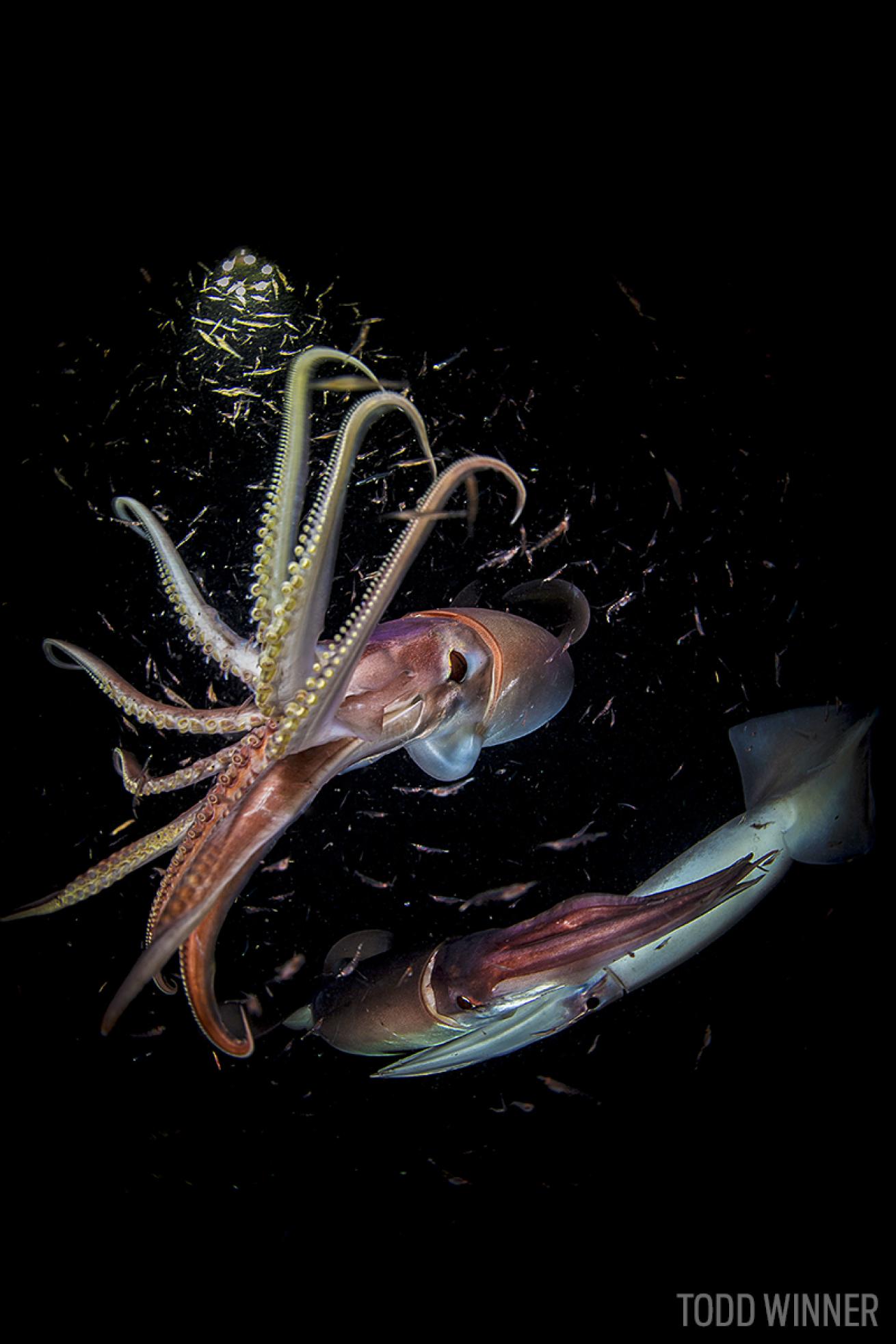Scuba Diving With Humboldt Squid

Todd WinnerThe Stuff Of Legend
Sea monsters don't just exist in tall tales.
Humboldt Squid
Scuba Diving With the Real-life Kraken: Do You Dare?
Giant squid are a go-to sea monster for nautical narratives — think mythical beasts like the Kraken or the submarine-attacking cephalopods of Jules Verne’s Twenty Thousand Leagues Under the Sea. As it turns out, giant squid are far more docile than science fiction would suggest — it’s their slightly smaller cousin that has enough chutzpah to take on a submarine.
Enter the Humboldt squid. The 6-foot-long cephalopods might not seem monstrous when compared with the giant squid’s staggering size of 40-plusfeet, but what Humboldts lack in size, they make up for in cunning, strength, aggression and sheer numbers.
With eight strong arms lined with barbed suckers, two tentacles used to grasp prey, and a razor-sharp beak the size of a baseball, Humboldt squid are effective hunters, to say the least. They can swim at about 15 miles per hour to chase down prey such as crustaceans, sardines, and especially lanternfish, which the squid attract at night using bioluminescence. They are equally deft when the roles are reversed: Humboldts can leap out of the water to escape predators like sharks, sperm whales and billfish. They have also been known to eat their own if one gets injured or trapped in a net.
Cannibalism aside, the squid’s true prowess as an apex predator comes from its ability to work as part of a team. Spending their days at depths exceeding 3,000 feet, the nocturnal creatures congregate at the surface to feed beneath the moonlight. They hunt in packs — sometimes in shoals of 1,000 individuals or more — and they’re incredibly smart, likely with a similar level of curiosity and problem-solving ability as octopuses, although their one-year life span and pelagic lifestyle make their intelligence hard to study.
Like other cephalopods, including octopuses and cuttlefish, Humboldts have organs called chromatophores in their skin that allow them to change colors and flash a variety of patterns on their body. Humboldts typically transition from white to a deep, purplish red. Scientists believe the squid use these flashes and color changes to “talk” among themselves as they coordinate a hunt or investigate objects in the water column.
Named after the Humboldt current that sweeps along the eastern Pacific, the squid have traditionally ranged from California down the Pacific coast of South America. However, due to El Niño events, their migration patterns have changed in recent years. Large schooling events have occurred in Monterey Bay, California, and Humboldt sightings have been reported as far north as Washington’s Puget Sound and southern Alaska.
In Mexico’s Sea of Cortez, rumors swirl of Humboldts pulling fishermen from their boats before dragging them into the depths like a terrifying modernday Kraken. These tales — along with their red coloration — helped Humboldts earn the regional nickname diablo rojo, or red devil.
In recent years, their numbers have declined in the waters around Baja — perhaps due to ocean acidification or changes in currents or water temperature — though a handful of operators, such as Cortez Expeditions in La Paz, still offer night-dive trips to look for them. But be warned: Stories of diablos rojos attacking divers are not fan fiction, so wearing protective gear and staying alert is imperative. Despite the risks and shifting odds, for divers who get the chance to go face to face with Humboldt squid in the wild, it’s an experience better than any storybook.
Fast Facts
Max Length: 6 Feet
Max Weight: 110 Pounds
Life Span: 1 Year
Status: Undetermined
Fun Fact: The squid's mouth is a basketball-size razor-sharp beak used for tearing the flesh of its prey.
Want more insane underwater encounters? How about scuba diving with an anaconda?










